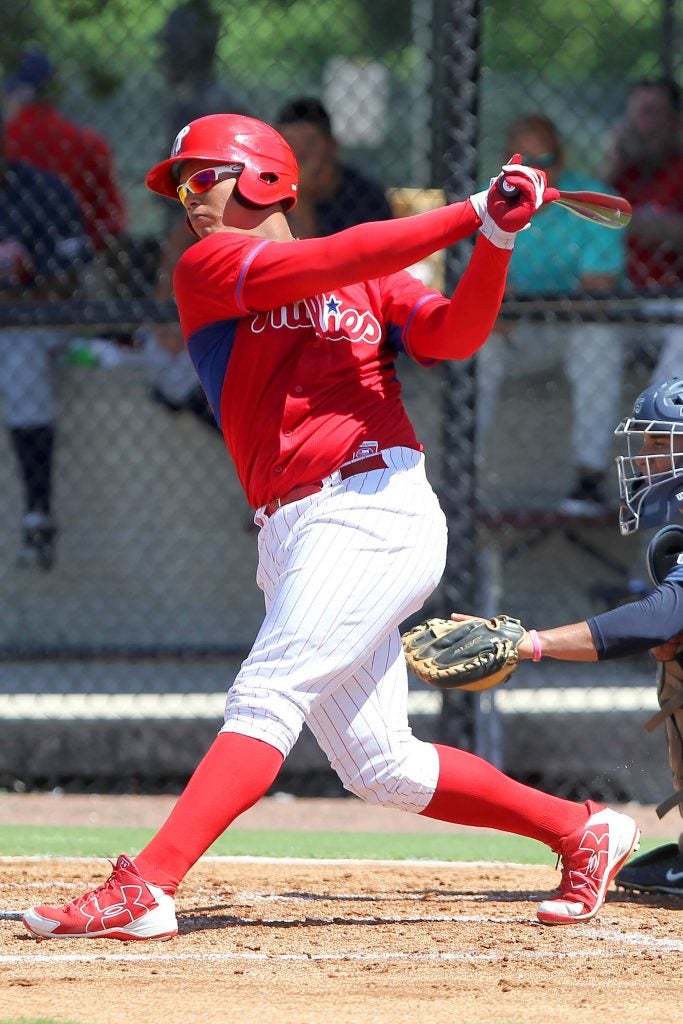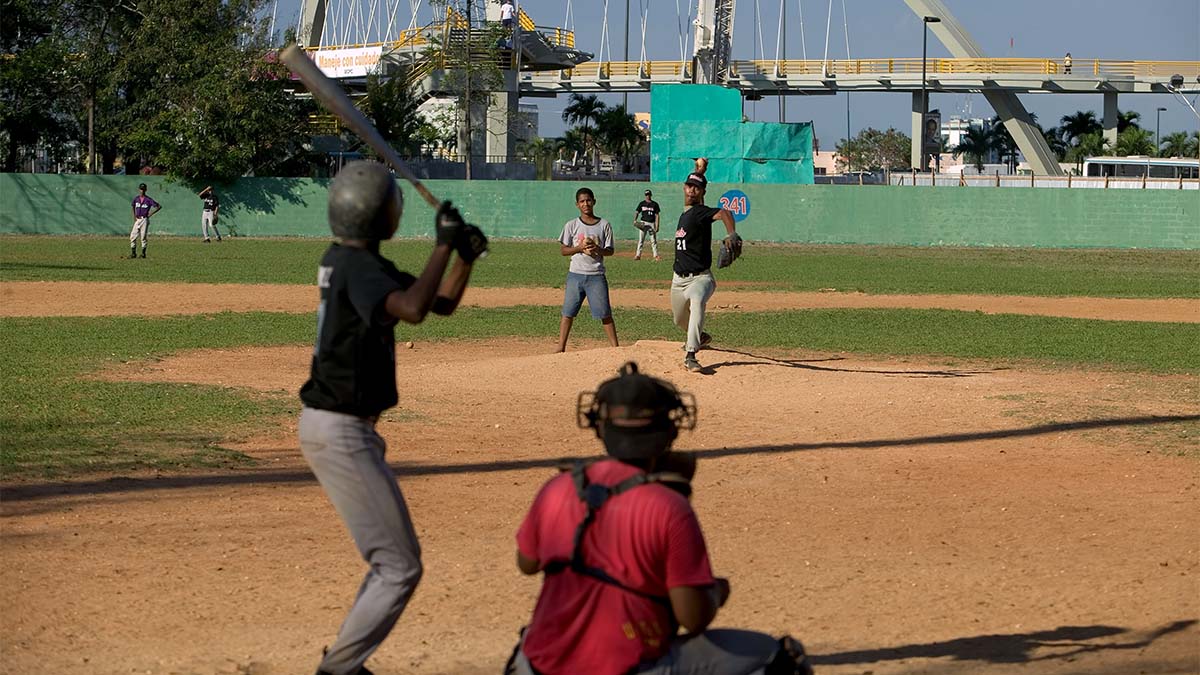Dominican players face difficulties on the road out of poverty and into MLB
Why this matters
Marking the end of the Global Sports Institute's year of inquiry on race and sport, GlobalSport Matters and the Sports Knowledge Lab at Arizona State University examined the impact of race and sport. Today, we look at how poverty-stricken young men in the Dominican Republic frequently use baseball to escape.
In 2009, 16-year-old Dominican prospect Yewri Guillen signed a $30,000 contract with the Washington Nationals.
He was soon suspended by Major League Baseball for allegedly lying about his date of birth. After training at the Nationals Dominican Academy without pay, MLB cleared him to play in early 2011.
On April 1 of that year, Guillen reported having a headache. As the pain began to worsen, Guillen was chastised by his coach for missing games.
His aunt and uncle took him to a hospital on April 7, but his contract had not been finalized, and he had no health insurance, meaning he could not afford treatment and had to look elsewhere. He was admitted to a clinic on April 8 and was diagnosed with bacterial meningitis. Doctors performed surgery to drain fluid from the brain, but the disease had already progressed too far. Guillen died on April 15.
Guillen’s death prompted an investigation into his treatment by the Nationals. MLB determined the team did all they could to help and had no way of knowing Guillen had the deadly disease.
However, the team declined to intervene when Guillen was turned away from the hospital, and it did not begin paying for his medical care until he was in the clinic.
The Nationals began administering vaccinations for meningitis after Guillen died. The club also gave Guillen’s family his signing bonus after he died — on the condition they sign a document promising they would not sue the franchise.
Despite being one of the fastest growing economies in Latin America, according to the CIA World Factbook, 30.5 percent of Dominicans fall below the poverty line. Many young boys and their families see baseball as their only way out.
Families are not the only people hoping for a successful baseball career. Independent scouts — called “buscones” — find and train young players, taking part of their signing bonus as pay. If a player doesn’t sign with a team, however, they are quickly dropped. With an estimated two-percent success rate, many young men are left without a job or education since they frequently drop out of school to pursue baseball full time. Prospects are able to sign at age 16, so they often leave school around age 12 or 13.
“Most of these kids are not going to be past eighth grade or ninth grade when they’re working with a buscon, and a lot of them are not going to continue going to school at that point,” said Dr. Rob Ruck, a sports history professor at the University of Pittsburgh.
In the Dominican Republic, players who are signed attend MLB academies until they are deemed ready to play in the minor leagues in the United States. Players that are unsigned often attend academies run by buscones, which vary in quality and legitimacy.
“There’s a great range of behaviors among these people,” Ruck said. “Some buscones are housing, feeding and giving medical care to the kids. Others basically have a facility and the kid lives at home, so there’s various levels of investment.”
Other independent training facilities, such as the Dominican Republic Sports and Education Academy, offer a more rigorous academic program than MLB Academies or academies run by buscones.
However, the DRSEA draws a different kind of player, one whose family has the financial means to make baseball a secondary activity.

“They understand baseball can also be a ticket to a college scholarship, and you can still get drafted,” Ruck said. “You leave with other skills.”
Others can’t wait that long.
“Their goal is getting that signing bonus … which is going to be more money than the family’s ever seen at one point in its entire history,” Ruck said. “It’s not just the kid whose future is on the line. It’s the family’s future.”
Philadelphia Phillies prospect Jhailyn Ortiz began working with a buscon when he was 12 years old. Soon after, the Phillies began to develop a relationship with his family, which Ortiz said helped him decide where to sign as an international free agent. He was given a $4 million signing bonus and is expected to be in the majors by 2021.
Juan Cabrera experienced something completely different. He signed with the St. Louis Cardinals for $25,000 when he was 18 and was released after two years of rookie ball. Cabrera was featured in the documentary, “Road to the Big Leagues,” which details the importance of baseball in the Dominican Republic. Baseball Hall-of-Famer Vladimir Guererro was also interviewed, and said if his baseball career had not worked out, he would have been an okra farmer.
Prospects in the United States go through a very different scouting process. While they share the common dream of playing in the majors, they often choose to pursue college baseball first and continue their education.
American players are able to attend open MLB tryouts at age 16, though it is rare they are signed. However, they must have completed high school to be eligible for the First-Year Player Draft. If players choose to play college baseball, whether they were drafted or not, MLB requires them to stay until they complete their junior year.
The idea of expanding the draft to include international players has been discussed in baseball circles, but proposals have been rejected several times despite support from Commissioner Rob Manfred and several owners.
Most of the opposition to an international draft comes from the MLB Players Association, in large part due to the potential such a move would have of lowering the number of international players. In the draft, teams are allowed a set number of selections, which eliminates the opportunity for many young international players to be picked in favor of American players. This has happened already. Since the draft was adjusted to include Puerto Rican players in 1990, MLB has seen a decline in players from the island, a U.S. territory.
Some people, such as former Marlins manager Edwin Rodriguez, are in favor of an international draft, largely because it forces players to finish high school, leaving options for the 98 percent of kids who never make it to the United States. If a player signs before completing high school, they become professional and forfeit high school and college baseball eligibility.
Perhaps the closest MLB came to implementing an international draft was after the death of Yewri Guillen.
His condition might not have gone unnoticed if the environment at the facility was healthy. By limiting the number of players a team can select, they can then allocate the money typically spent on free agents to providing players they draft with better services and conditions.
Most of the MLB Academies have since undergone major renovations and staff additions in order to quell concerns.
By not being included in the draft, prospects outside of the United States, Canada and Puerto Rico (rules for Cuban prospects are also different) can sign with a team as a free agent during MLB’s designated International Signing Period.
Each team is allotted a certain amount of money, based on its prior performance and market size, to use for signing international prospects. Teams are allowed to trade money from that pool in exchange for players. Signings of $10,000 or less are not deducted from the pool.
The amount spent among teams varies. “Small-market teams, particularly, that need to develop international talent, because they can’t sign expensive free agents are definitely going to spend every dollar of it,” Ruck said.
Just as at the major league level, a player’s age is a large determinant of their value. A 26-year-old has more long term potential than a 32-year-old. Likewise, a 16-year-old is worth more to a team than a 19-year-old. The fear of lost value for Latin American prospects often prompts them to lie about their date of birth to appear younger. This buys them a few extra years to develop.
Other players turn to performance enhancing drugs to gain an advantage over the competition or to avoid falling behind. PED use in the Dominican Republic went largely unchecked until recently. MLB extended its drug policy to cover Dominican trainers and prospects in August 2018. The start of testing does not mean players have stopped using PEDs, according to Ruck.
“The drug gurus are pretty good,” he said. “Every couple of years, the drug enforcers catch up with them. But you’ve got to think a whole lot of people, in a whole lot of sports, in a whole lot of countries are getting away with cheating.”
The problem faced in the Dominican Republic is that those who administer the drugs are often not gurus.
“If you’re not very good at cheating, because you’re not very sophisticated in how to purchase, administer, cover up these drugs with other drugs, and know how long it stays in your system, you’re going to get caught.”
Just as testing is not a strong deterrent, neither is getting caught.
“It’s a much higher risk than reward,” Ruck said, but players often do everything they can to escape poverty, even if it means cheating or lying.
“When you’re poor and you’re desperate, and you don’t have a great deal of savvy … it’s a lot easier to get caught.”
Ryan Sharp is a senior sports journalism student at Arizona State University
Related Articles
Building a baseball team: Assimilating Latin, Asian players a team effort
Astros speaking the language of victory: How Spanish unites them
Fielding diverse lineups, ownership pays off in Premier League, Major League Baseball
MLB players aided through visa process, but families face roadblocks


